|
Sightseeing in
Kathmandu
Tuesday, 6th March 2012
| Kathmandu Durbar Square Listed as one of the eight Cultural World
Heritage sites by UNESCO, Kathmandu Durbar Square is a cluster of
ancient temples, palaces, courtyards and streets that date back to
the 12th and 18th centuries.
It was where the city’s kings were once crowned and legitimised, and
from where they ruled (durbar means ‘palace’). As such, the square
remains the traditional heart of the old town and Kathmandu’s most
spectacular legacy of traditional architecture. |
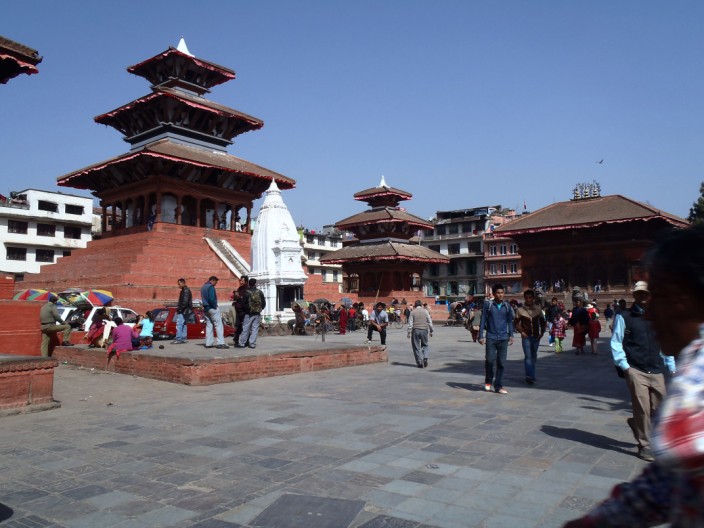
Durbar Square is a hive of activity . . .
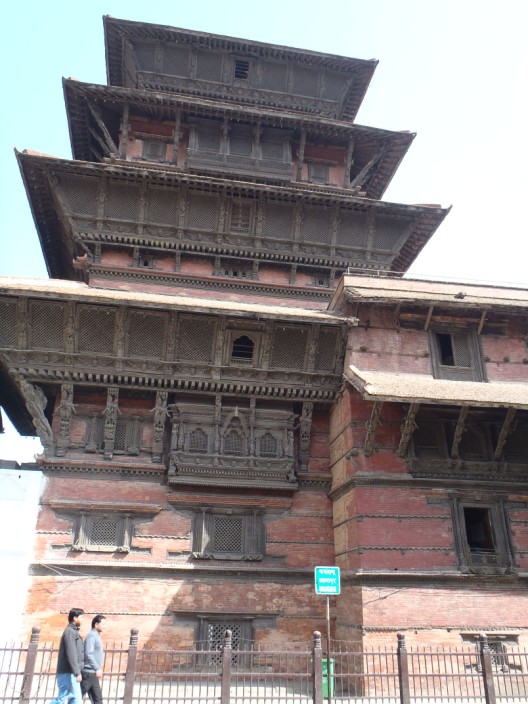
with multiple roofed temples . . .
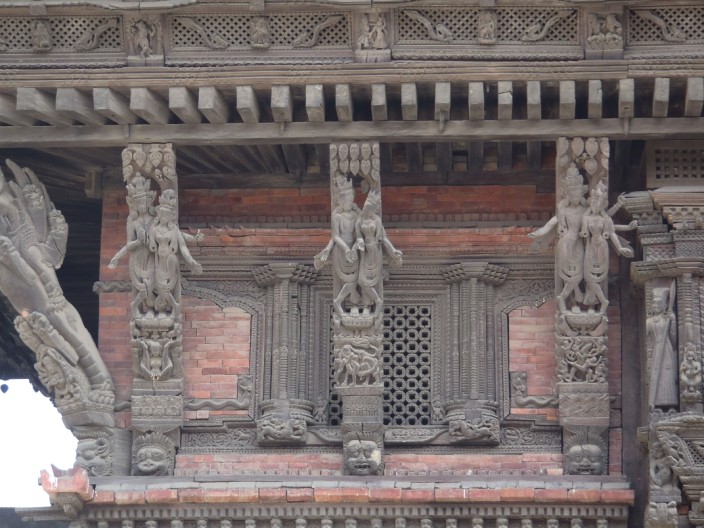
surrounded by intricate carving
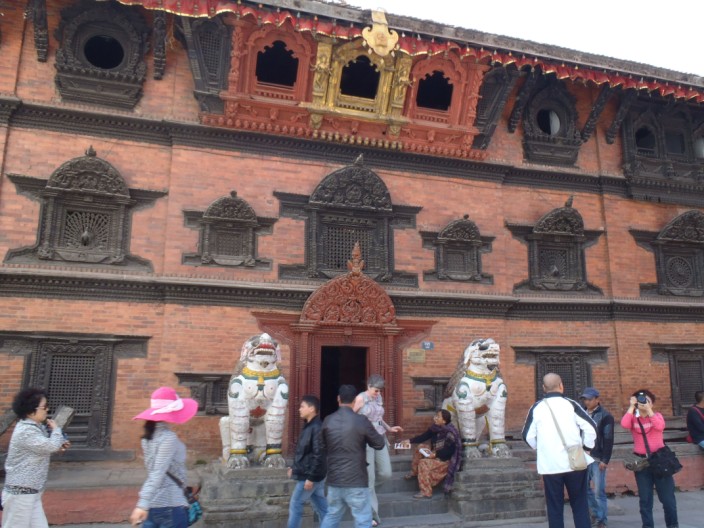
Kumari Chowk (courtyard), the home of Kumari, Kathmandu's
living goddess
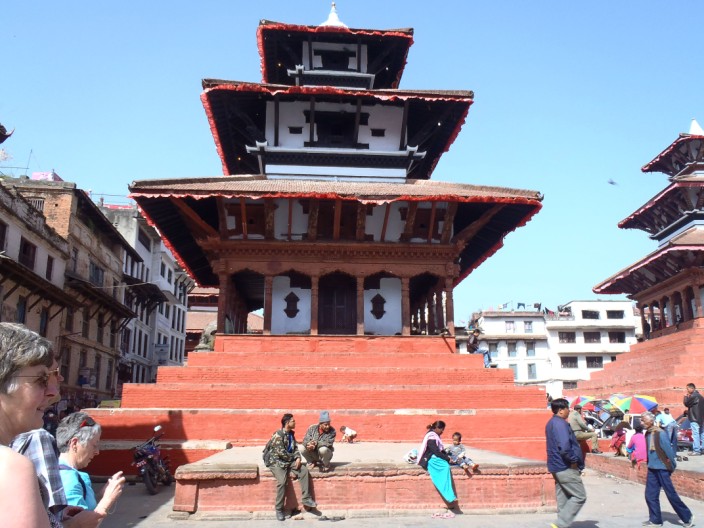
Maju Deval temple
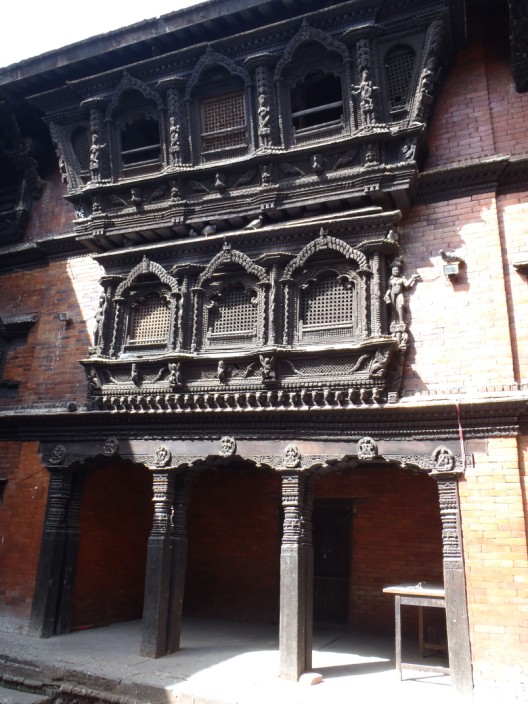
More carving . . .
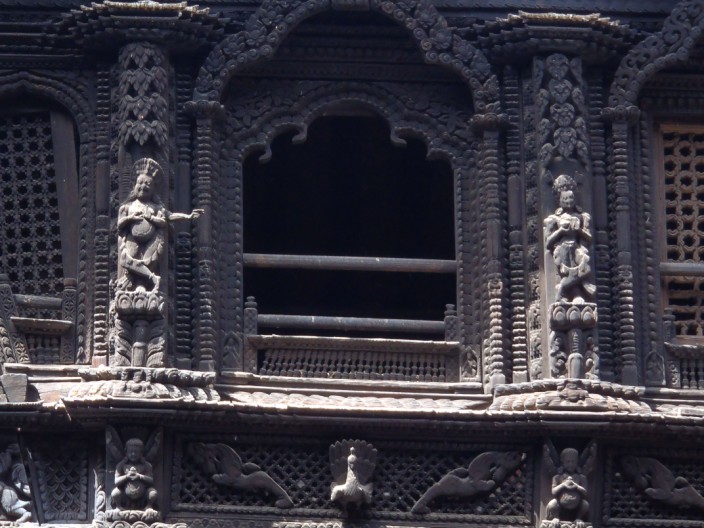
which can be seen in detail
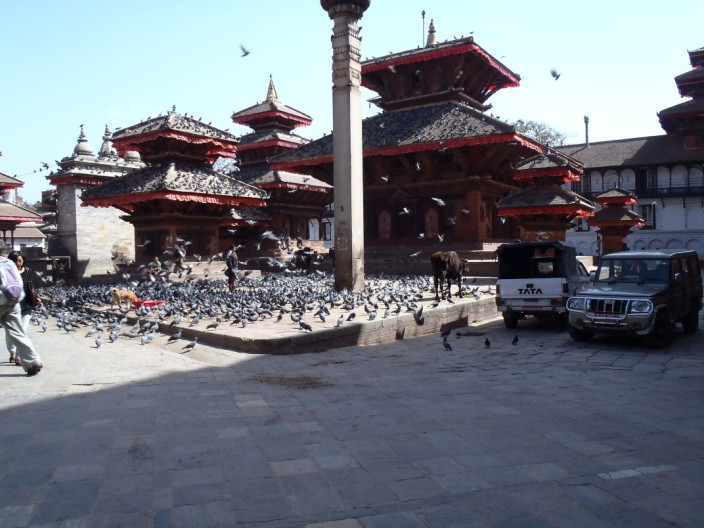
Pigeon Terrace!!
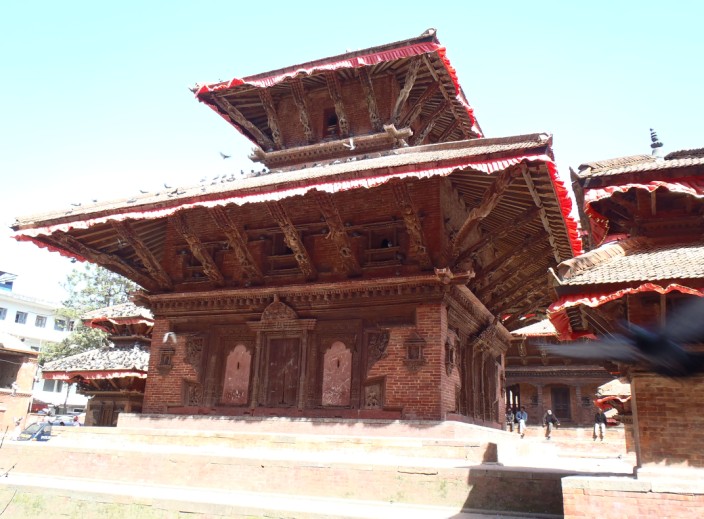
One more temple
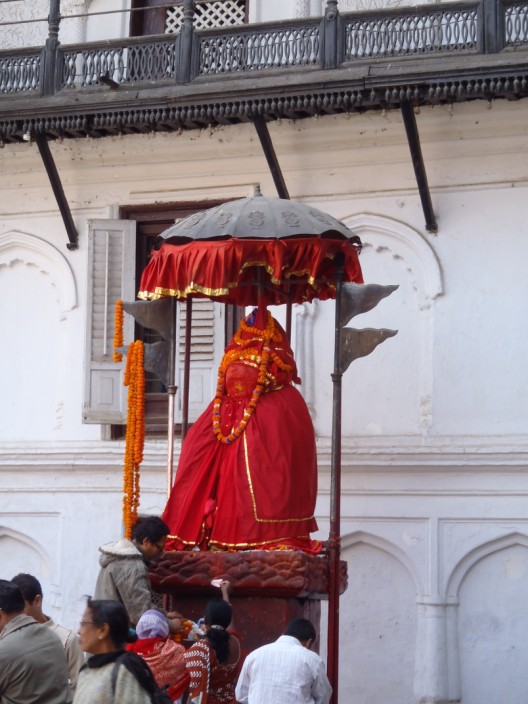
Hanuman, the monkey god, near the entrance to the Royal Palace
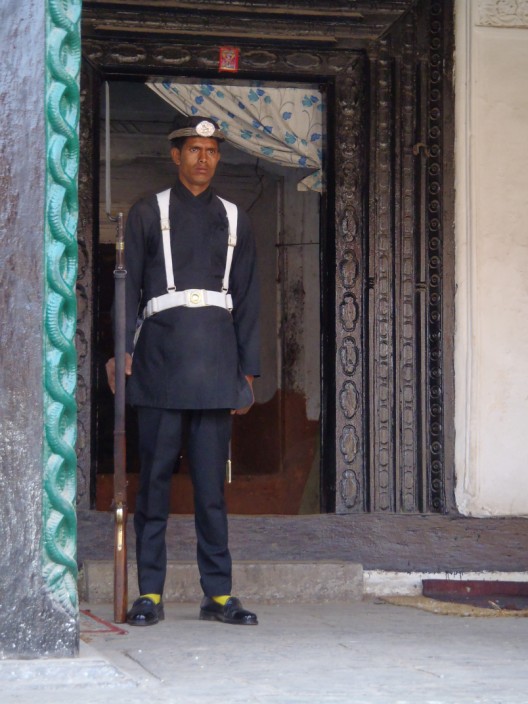
On Guard!
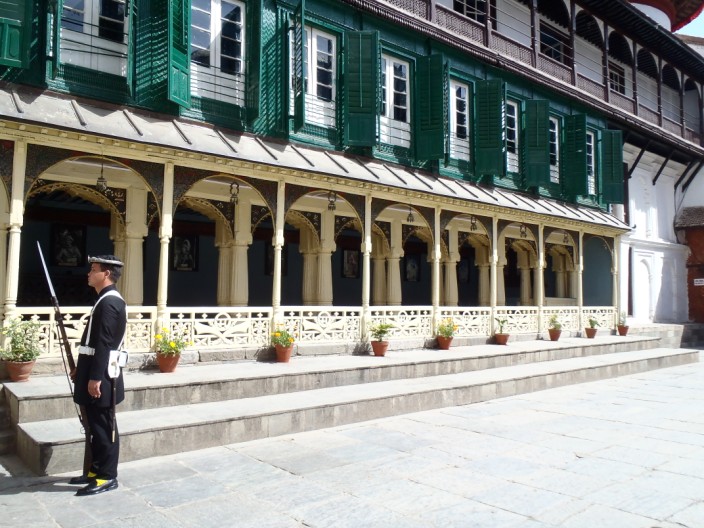
The Kathmandu Durbar Square holds the palaces of the Malla and
Shah kings who ruled over the city . . .
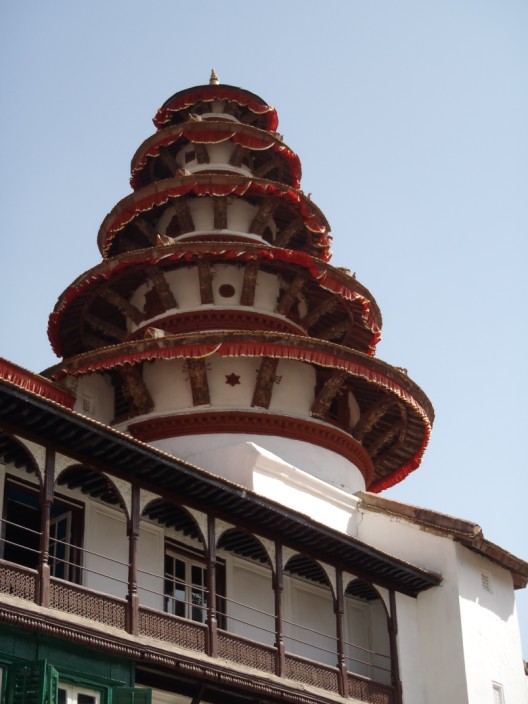
until 1896 when they moved to the Narayan Hiti Palace
(where
the Nepalese Royal massacre occurred on Friday, June 1, 2001)
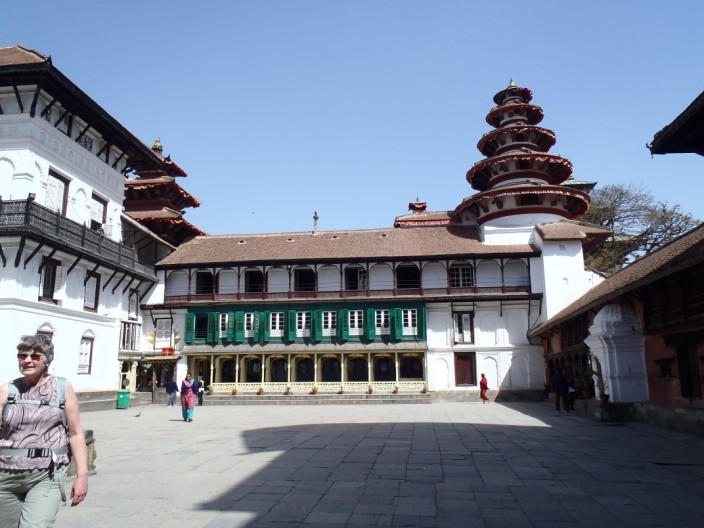
The palaces have undergone extensive and repeated renovation
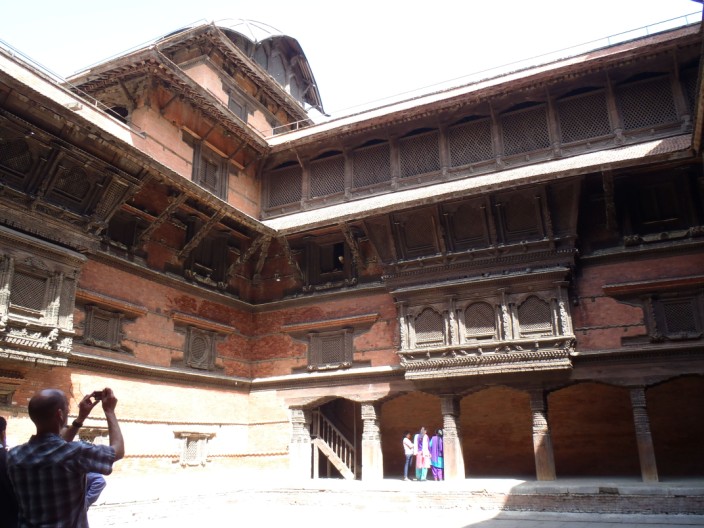
The old palace . . .
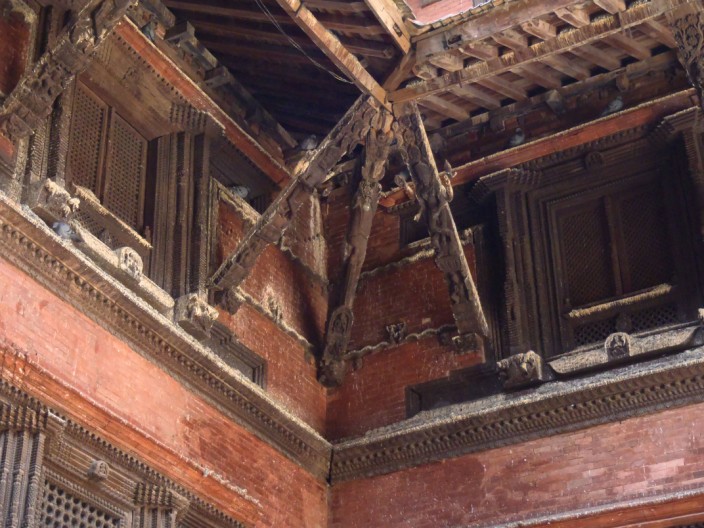
with it's intricate carvings . . .
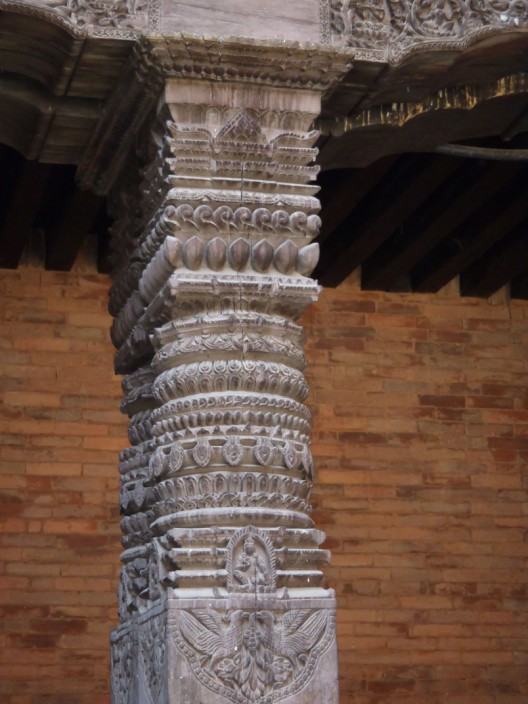
and columns
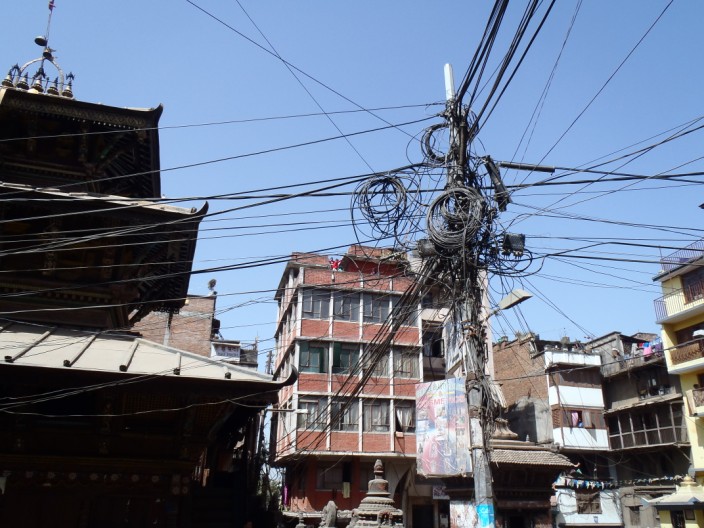
A nightmare of wires . . .
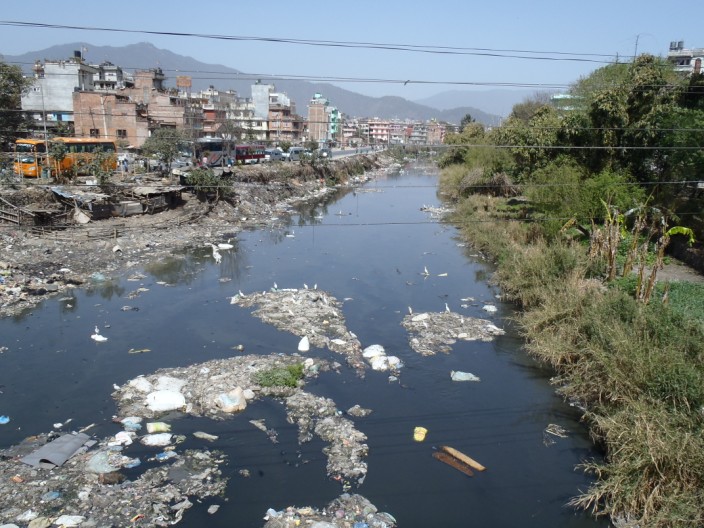
as we make our way across . . .
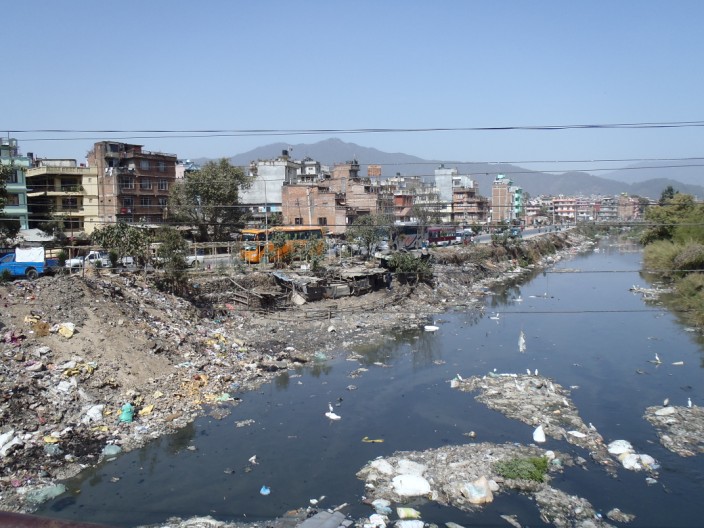
a very polluted river . . .
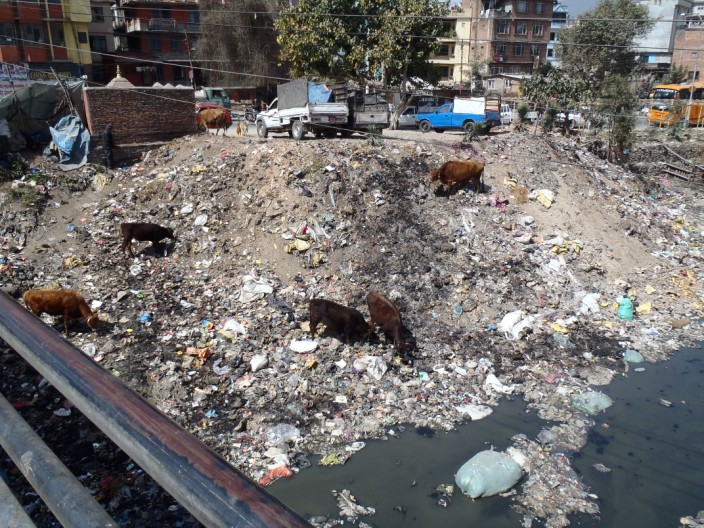
where cows browse amongst the rubbish
| Swayambhunath/Monkey Temple The Buddhist temple of
Swayambhunath, situated on the top of a hill three km west of the
city, is one of the most popular symbols of Nepal. The temple is
colloquially known as the 'monkey temple' after the large tribe of
monkeys which guards the hill.
The painted eyes on all four sides of the stupa symbolize the
all-seeing eyes of the Buddha. What looks like a nose is the Nepali
number one, which represents the unity of all things.
Swarms of pilgrims and red-clad monks circle the complex spinning
the prayer wheels. Interestingly the temple complex is scattered
with shrines and statues of Buddhist and Hindu deities, and the
assortment of pilgrims from both faiths characterises the country’s
unique religious harmony. |
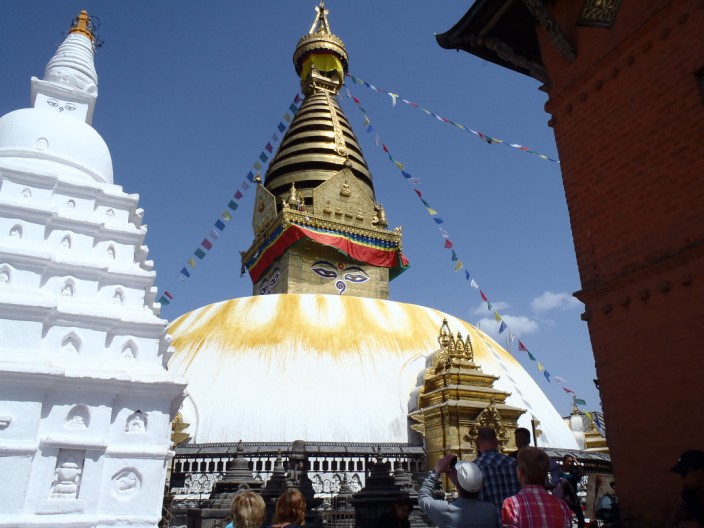
A golden spire crowning a conical wooded hill, Swayambhunath Stupa is the most
ancient and
enigmatic of all the holy shrines in Kathmandu valley. Its lofty
white dome and glittering
golden spire are visible for many miles and from all
sides of the valley.
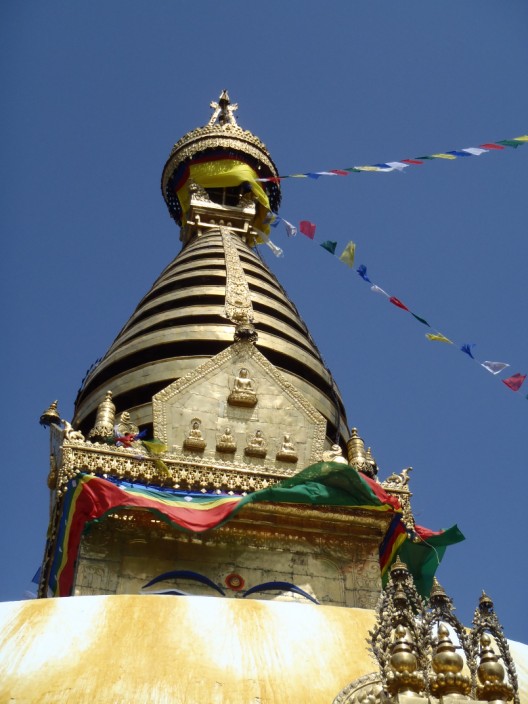
The square tower is topped by a pyramid with 13 steps from the
base to the pinnacle,
represents the ladder to enlightenment or ‘Bodhi’ from
which Boudhanath Stupa gets its name
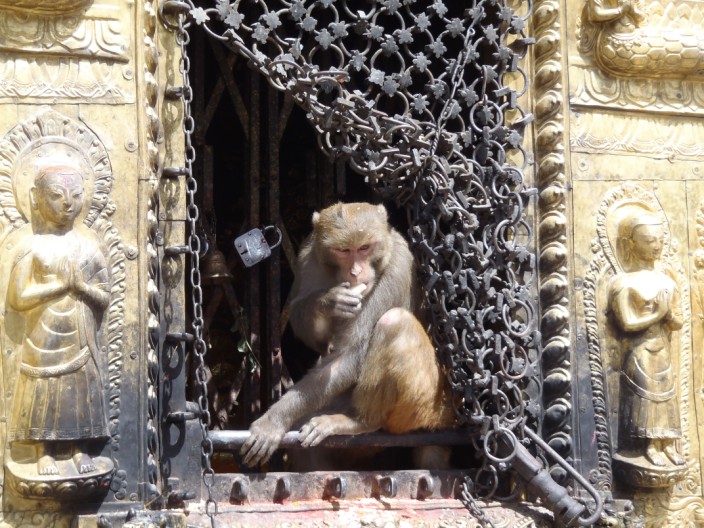
A monkey enjoys a titbit
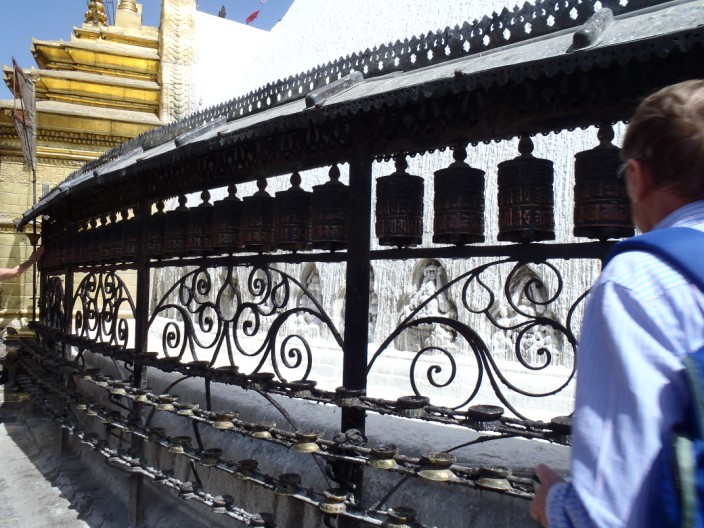
Some of the many prayer wheels that surround the temple
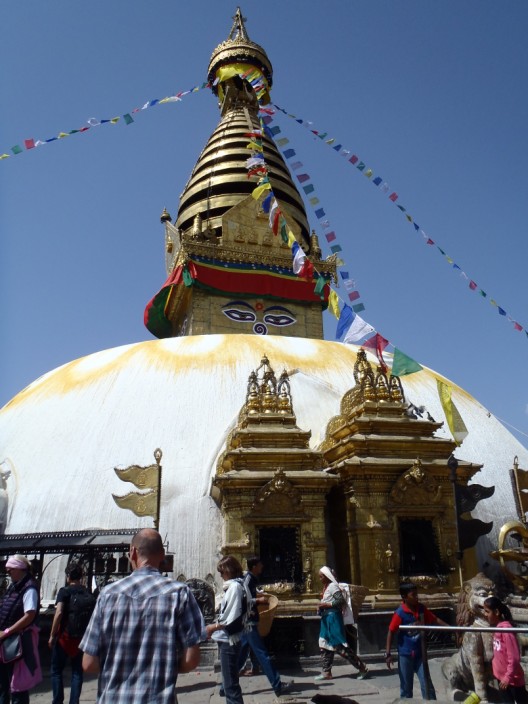
Shrines of the east and central Dhyani Buddhas
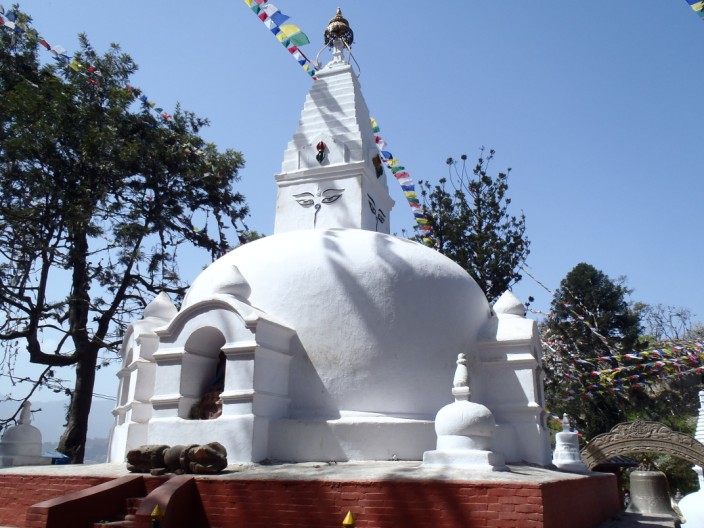
Two more Stupas . . .
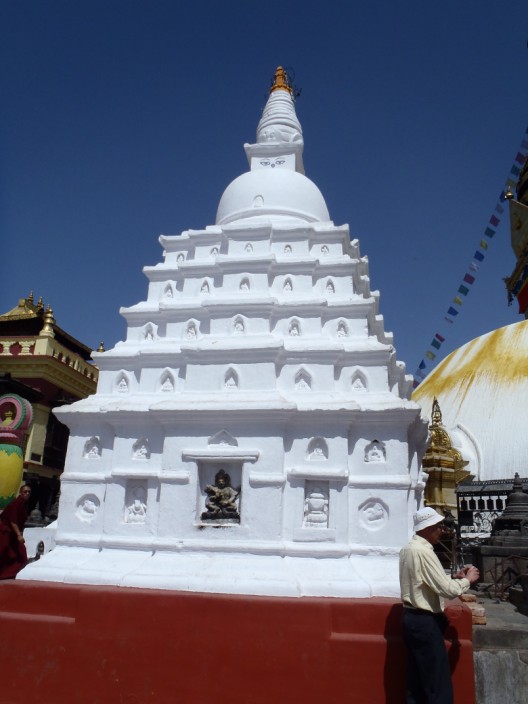
as we explore the area . . .
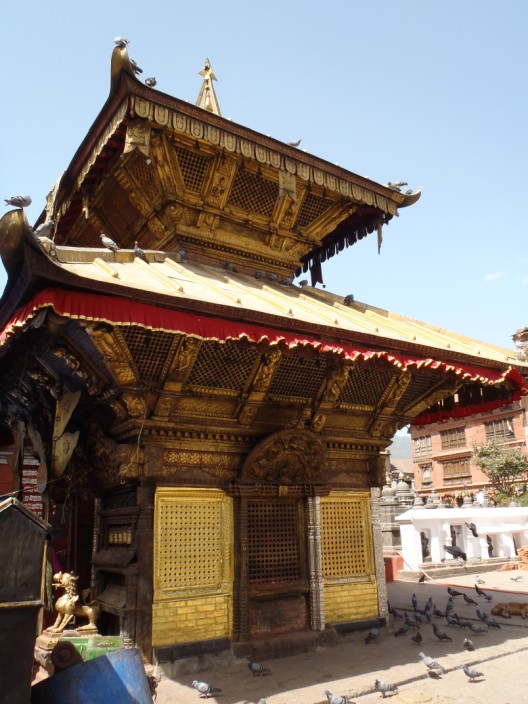
and another temple
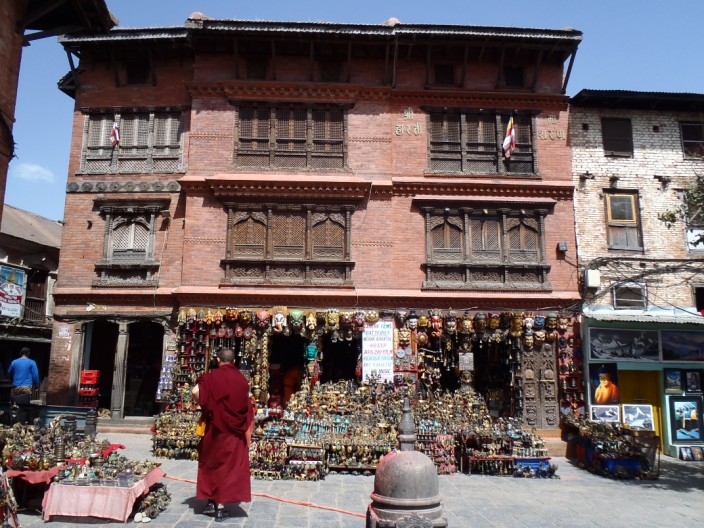
A typical building exhibiting its multitude of goods for the
tourist
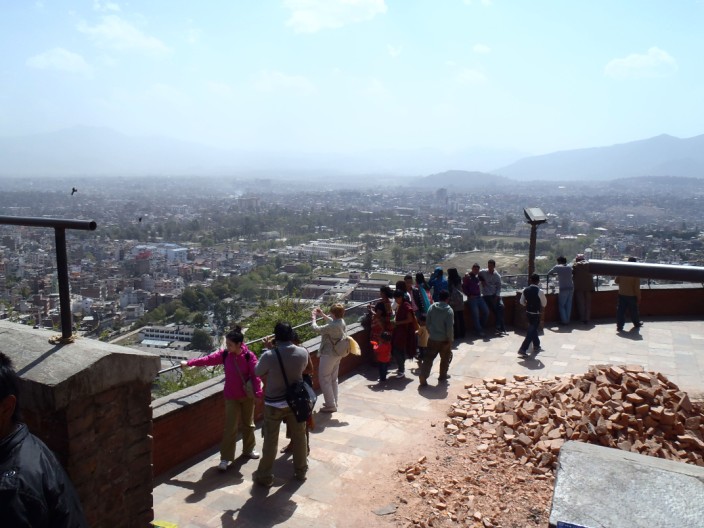
A short climb brings us to an observation point . . .
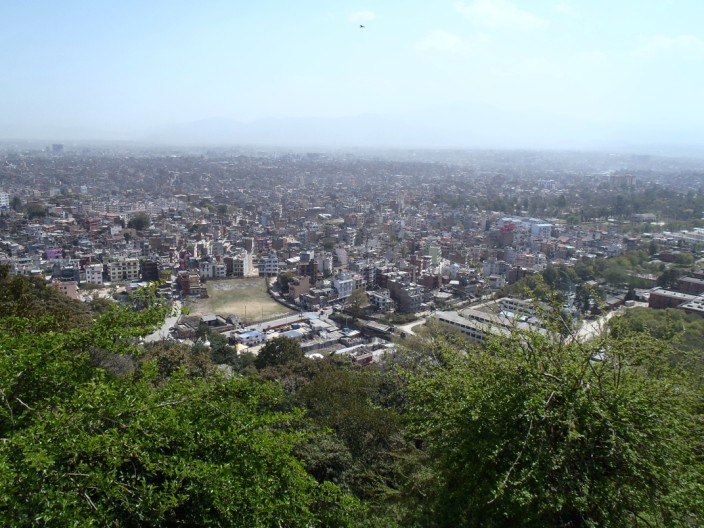
where we can look out . . .
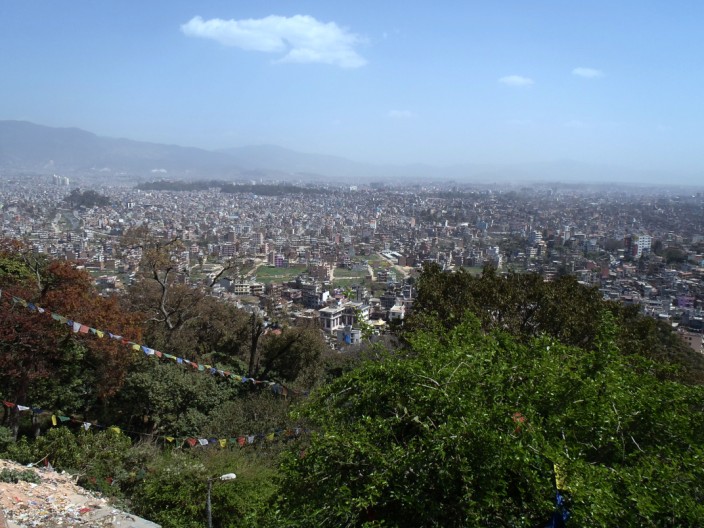
over Kathmandu
| Rum Doodle Restaurant and Bar Named after the world’s highest
mountain, the 40,000½ft Mt Rum Doodle (according to WE Bowman,
author of The Ascent of Rum Doodle, a spoof of serious
mountaineering books), this famous bar was claimed by Time magazine
(1983!) to be ‘one of the world’s best bars’.
It’s long been a favourite meeting place for mountaineering
expeditions – Edmund Hillary, Reinhold Messner, Ang Rita Sherpa and
Rob Hall have left their mark on the walls – and a visit here feels
like a bit of a pilgrimage for mountain lovers. Trekking groups can
add their own yeti footprint trek report to the dozens plastered on
the walls. |
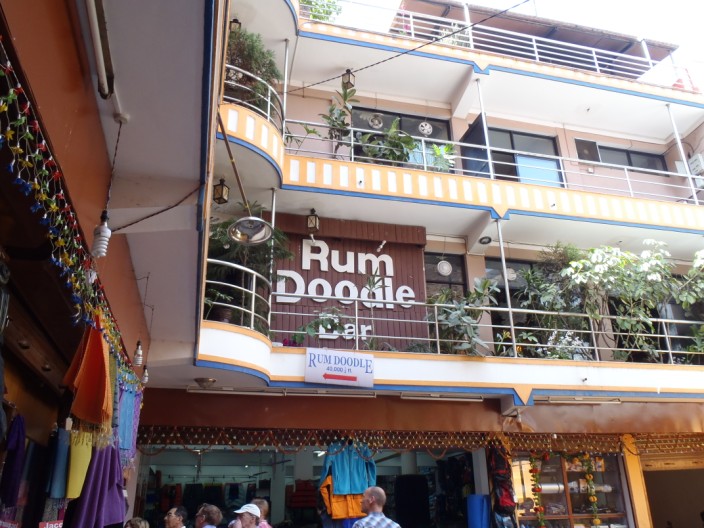
Time to stop for lunch . . .
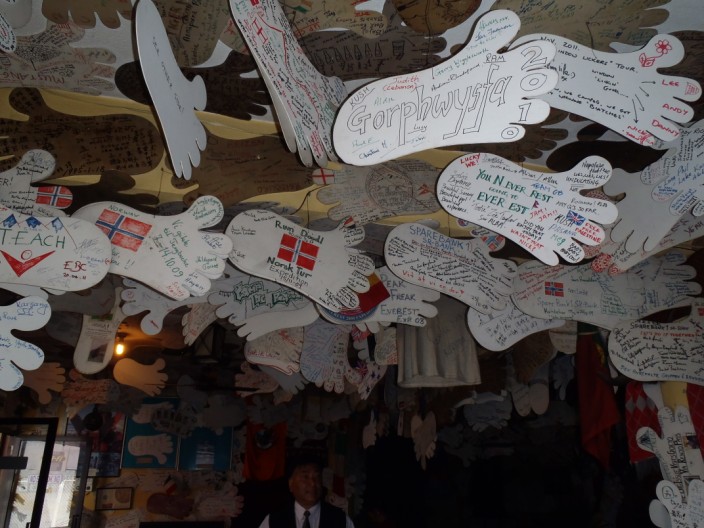
and check out the Yeti feet
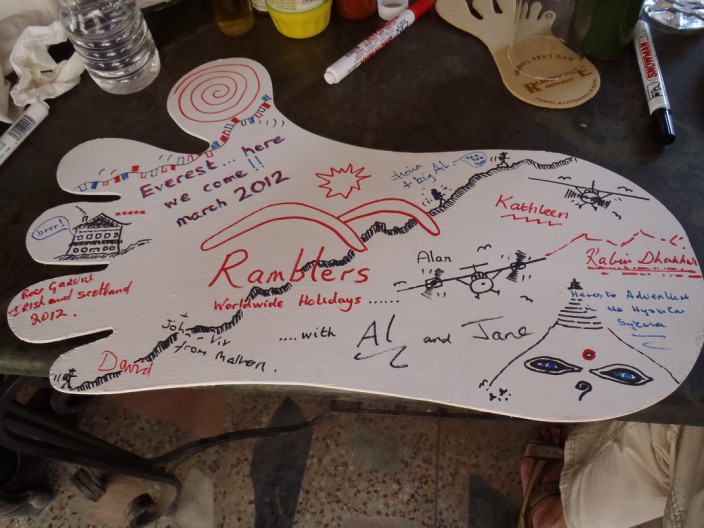
Al, our leader, shows his artistic skills . . .
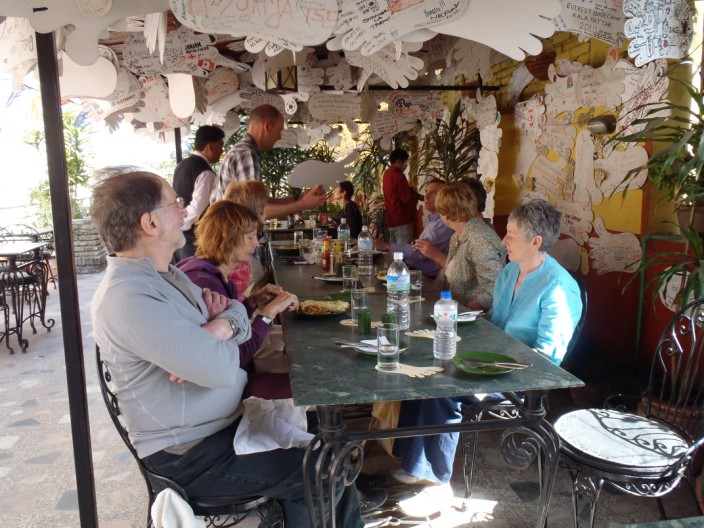
as we enjoy drinks (water) on the terrace . . .
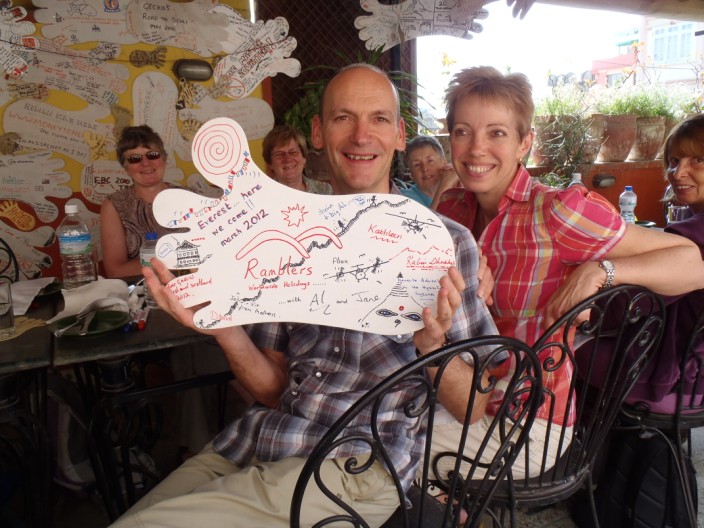
then he poses with Jane . . .
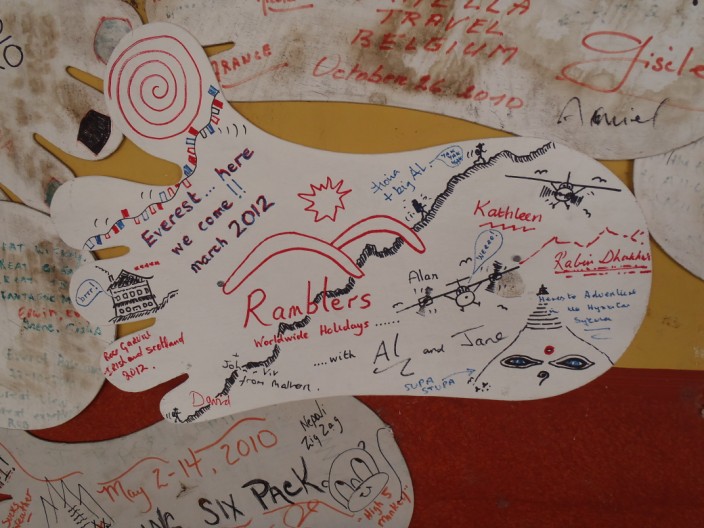
before the foot is attached to the wall
| Boudhanath Stupa: Boudhanath stupa is 6 km to the east of
Kathmandu and is said that this stupa was built during the 5th
century A.D. Boudhanath Stupa is one of the biggest in the world and is ringed
by Buddhist lamas and monasteries. Boudhanath is a holy stupa for Tibetan
Buddhists who come here in thousands in winter festival to pay their honour.
When refugees entered Nepal from Tibet in the 1950s, many decided to
live around Boudhanath. |
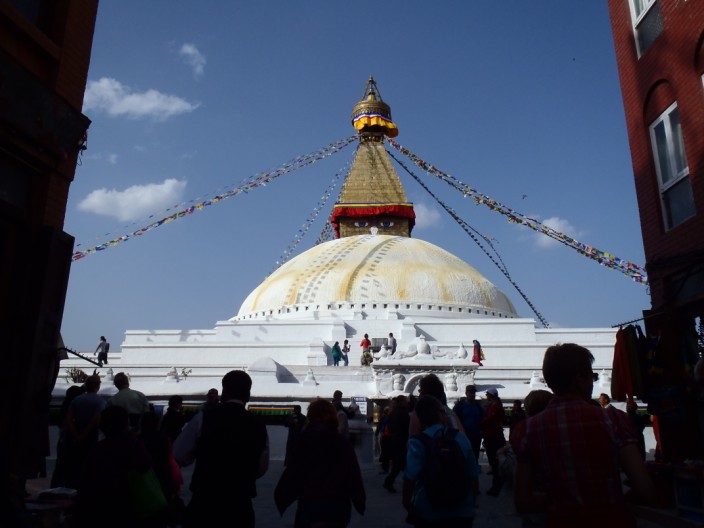
The entrance to the stupa
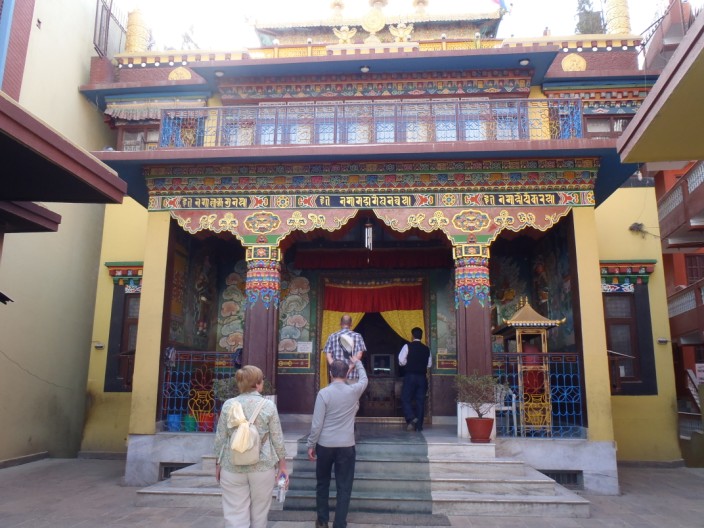
Intricate carving . . .
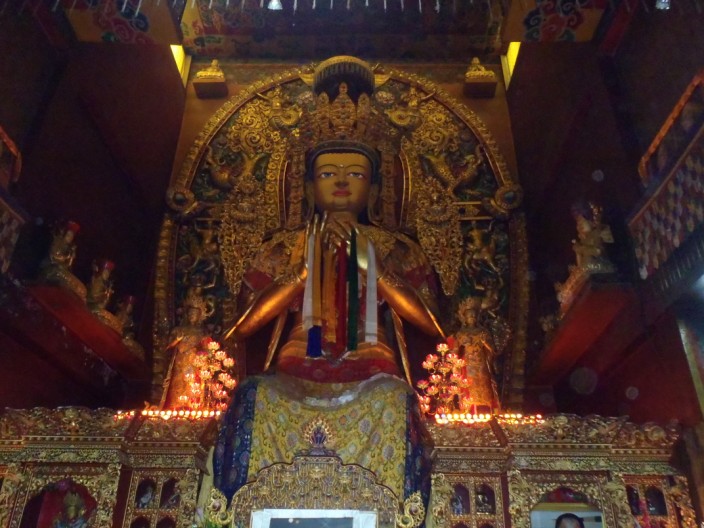
and a more intricate interior
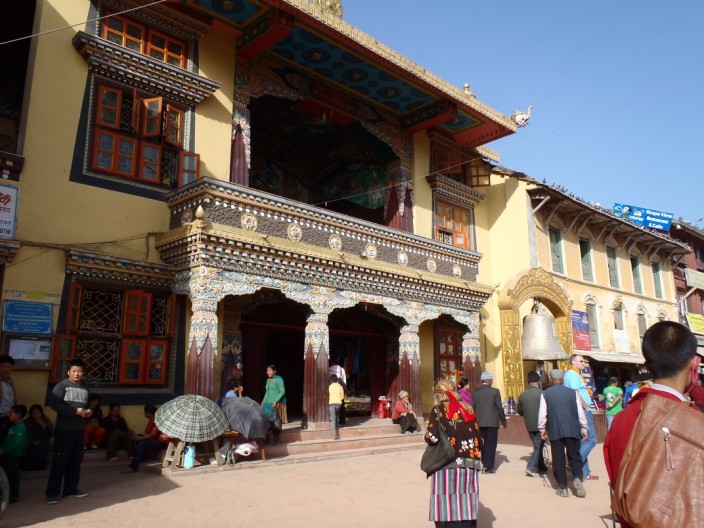
Jamchen Lhakhang Monastery with the 'big bell'

Buildings surrounding the stupa . . .
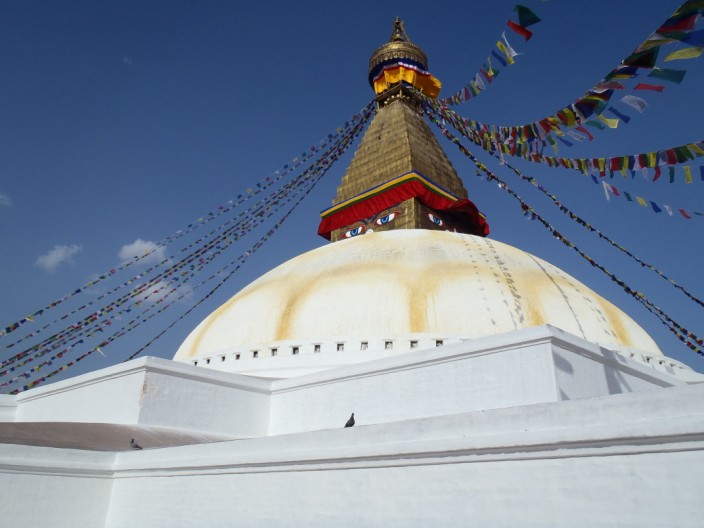
and one last look
| Pashupatinath Pashupatinath is located on the holy river,
Bagmati, 6 km east of Kathmandu. It is a sacred place where Hindus
come (to die and) to be cremated. The Hindu religious belief is that
dying and being cremated in Pashupatinath and having your ashes
scattered in the Bagmati river will give you salvation. The water of
the Bagmati is holy because it eventually flows into the holy Ganges
river. In this way, the Hindu will be released from the cycles of
rebirth. Along the river side, there are several ghats used for both
cremations and purification baths. The temple itself is only open to
those of the Hindu faith. |
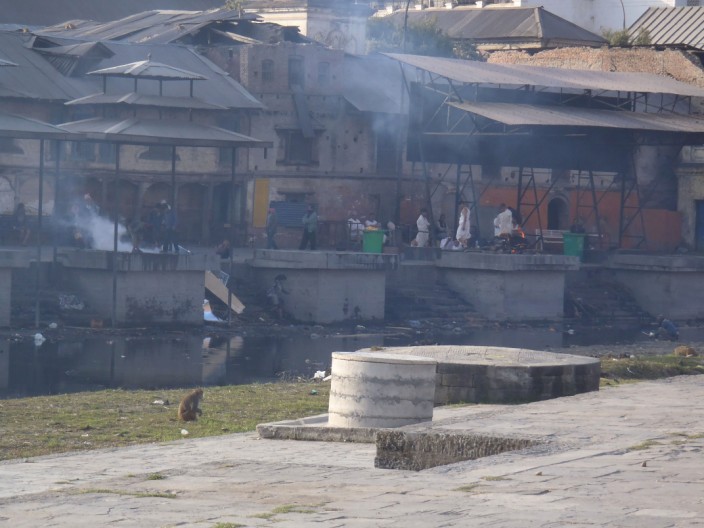
| Dinner After returning to the hotel we head out to a local restaurant
for dinner. |
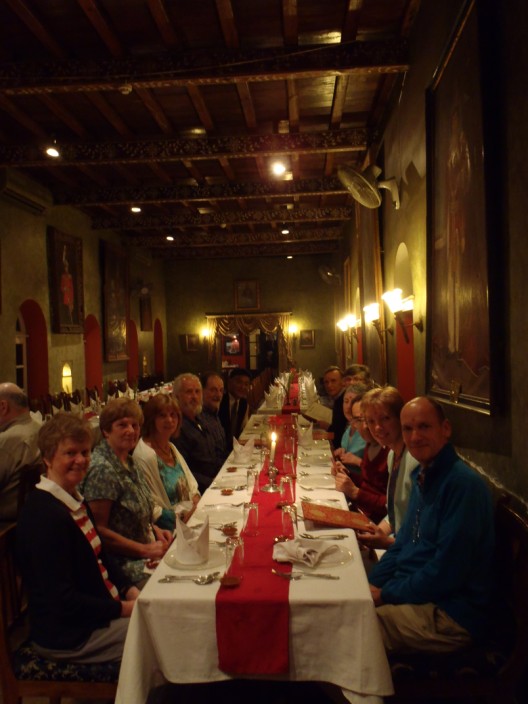
All dressed up and ready to eat
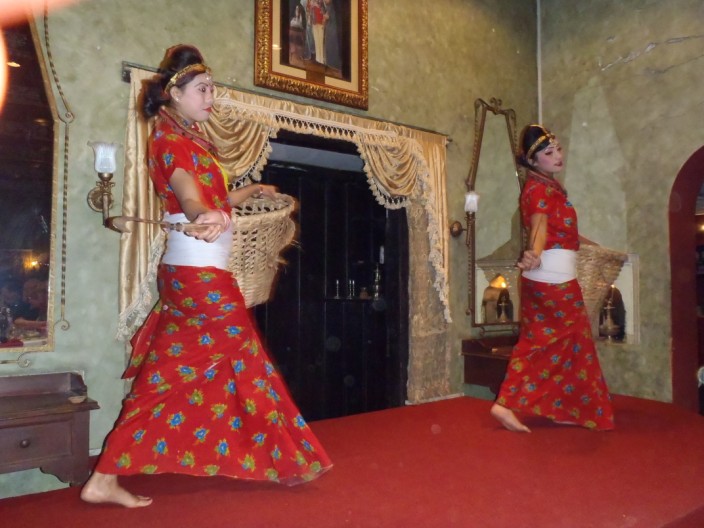
We are surprised by the appearance of dancers . . .
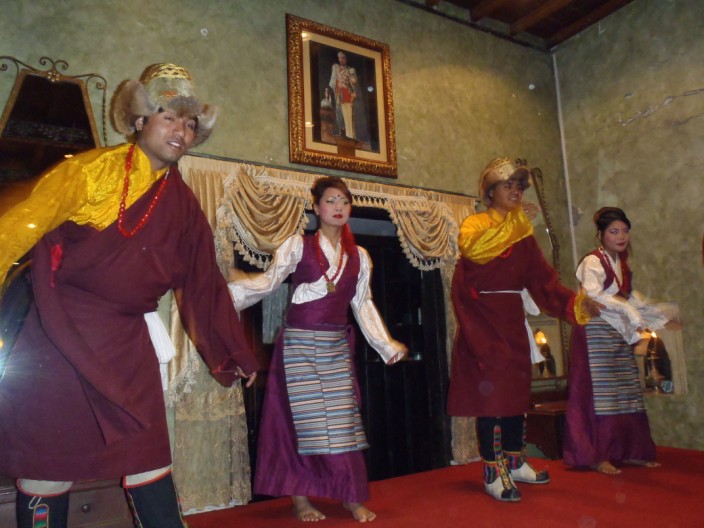
who entertain us at intervals throughout the meal
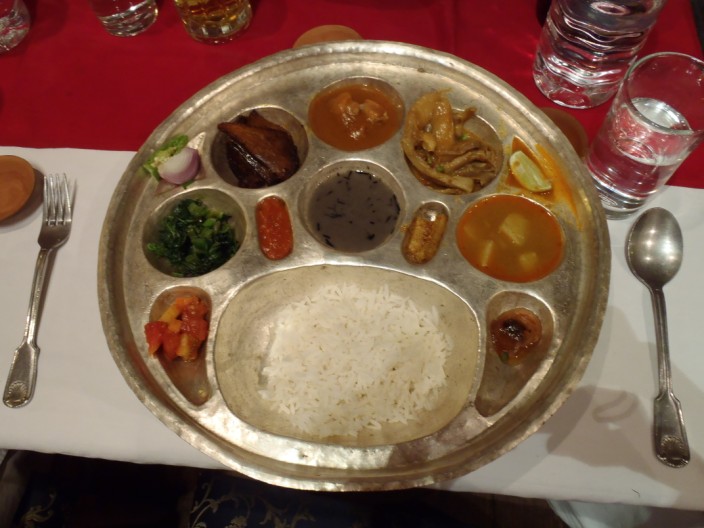
Quite a selection - which was delicious
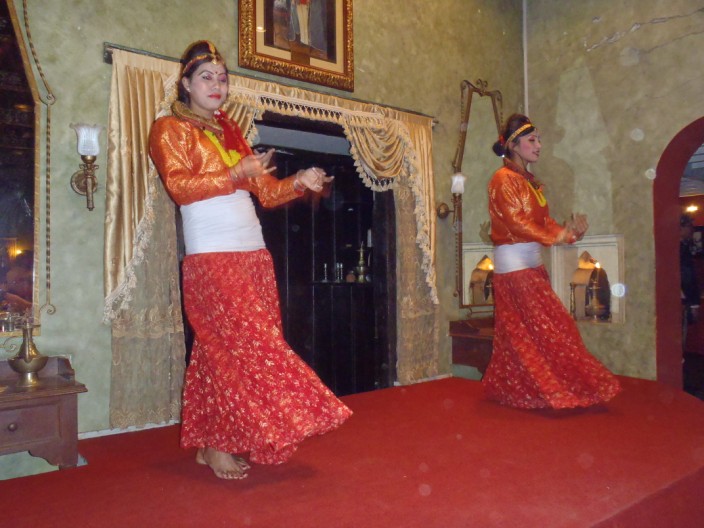
Then it's back to the dancers . . .
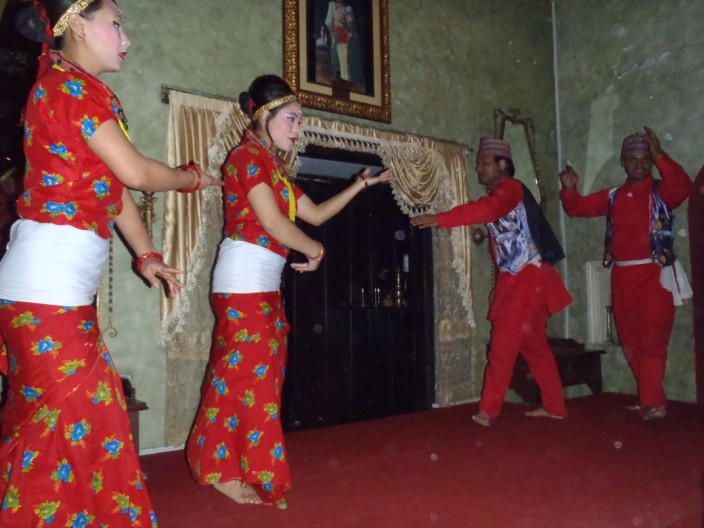
telling different stories . . .
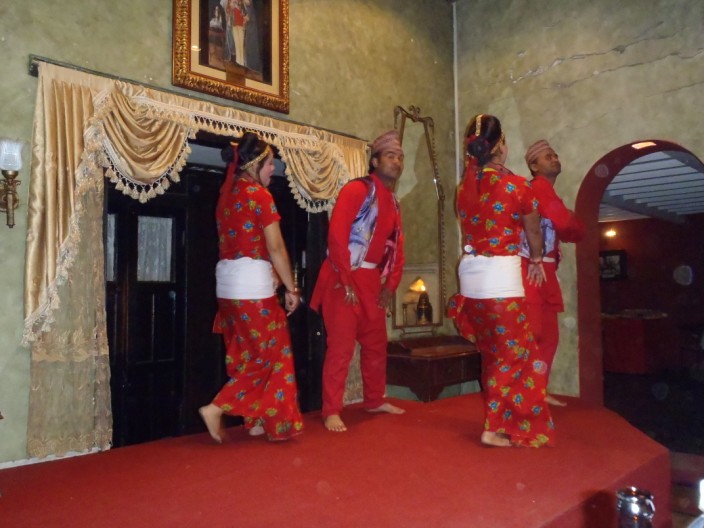
with each performance
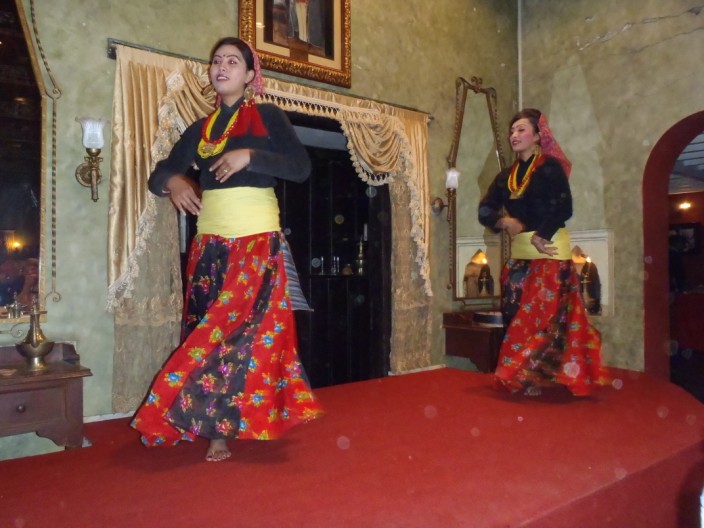
It was a real treat . . .
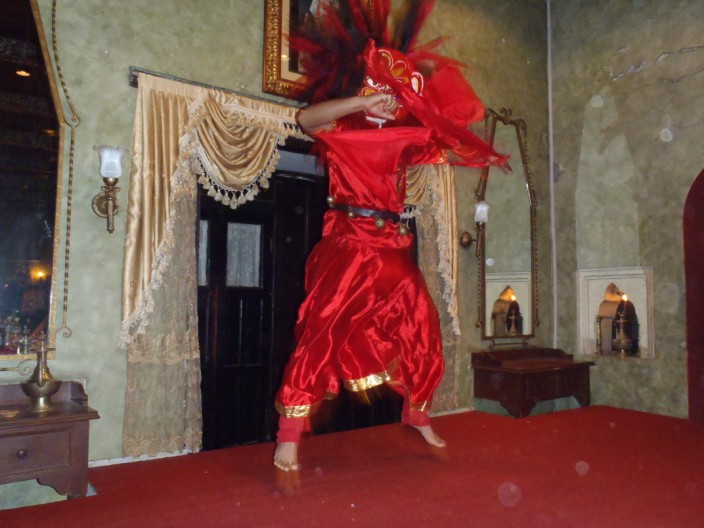
to finish off . . .
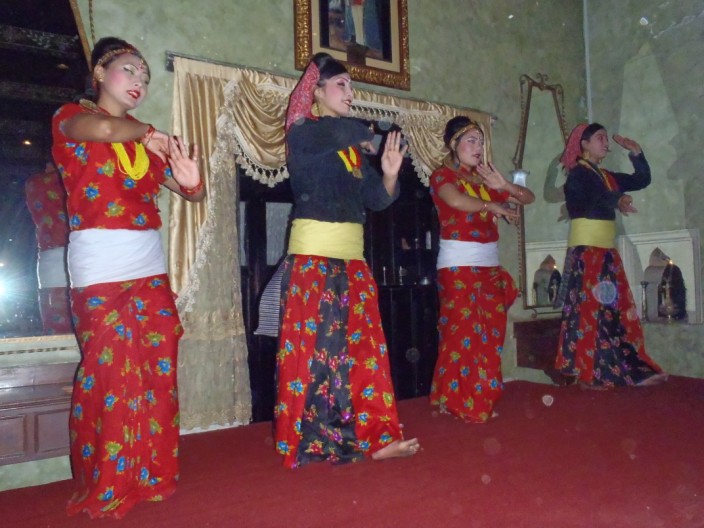
a day of sightseeing
Return to top
Return to Holidays List
|